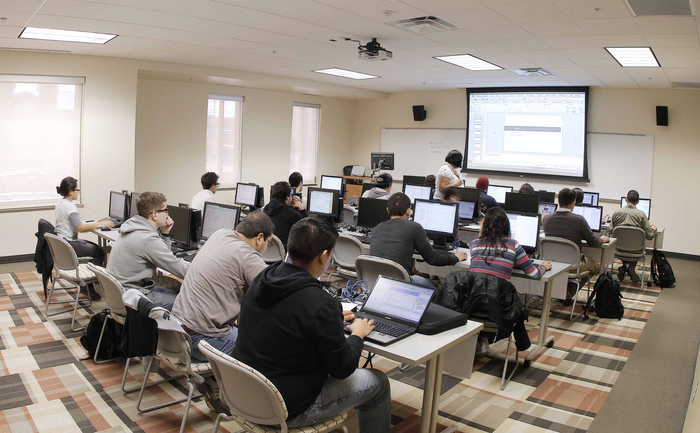The discovery could lead to faster and cheaper data storage, better sensors and other advances in electronics

Credit: Photo provided
FAYETTEVILLE, Ark. – University of Arkansas physicists have documented a means of improving the magnetoelectric response of bismuth ferrite, a discovery that could lead to advances in data storage, sensors and actuators.
Bismuth ferrite, or BFO, has long been of interest to scientists because its functional properties can be controlled by applying external stimuli; its magnetic response can be controlled via electric field, and its electrical response can be controlled via magnetic field, hence the name magnetoelectric. BFO is of particular interest because it is one of few magnetoelectric materials functional at room temperature. A limiting factor, however, is the small magnetoelectric response. Enhancing that response would increase the material’s usefulness.
U of A scientists devised a means of improving the response by simulating a situation in which a mix of three quasiparticles creates a new quasiparticle they called “electroacoustic magnons.”
“This mechanism provides opportunities to engineer the size and shape of the material to reach strikingly larger magnetoelectric responses,” said doctoral candidate Sayed Omid Sayedaghaee, first author of a paper published in the journal Nature Partner Journal Computational Materials. Physics researchers Charles Paillard and Bin Xu, along with research professor Sergey Prosandeev and Distinguished Professor Laurent Bellaiche contributed to the study.
The researchers used supercomputers at the Arkansas High Performance Computing Center to create a model that explains the electroacoustic magnons and also explains the dynamics of magnetoelectric effects. Their study was supported by grants from the Defense Advanced Research Projects Agency and the Army Research Office.
###
Media Contact
Bob Whitby
[email protected]
Original Source
https:/
Related Journal Article
http://dx.






